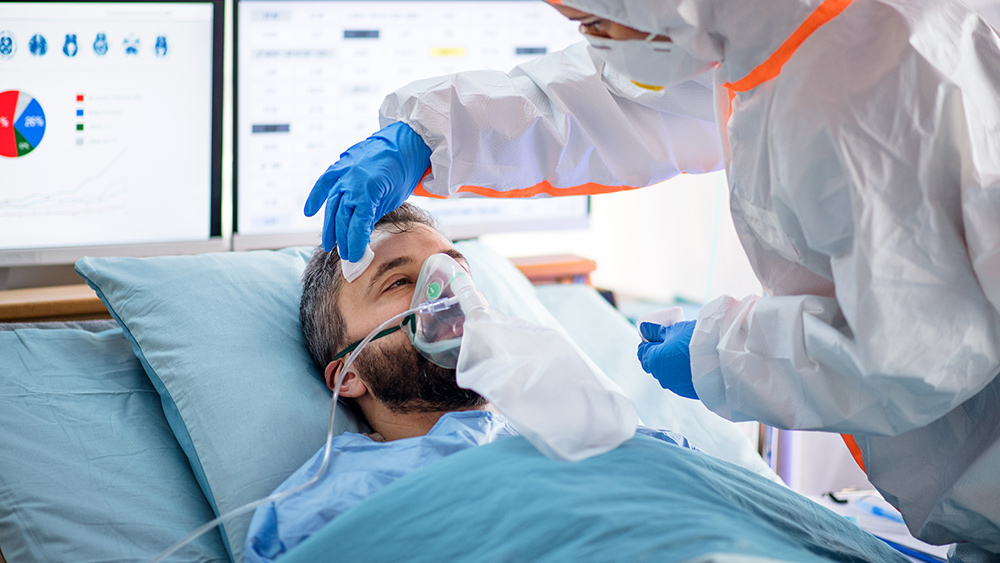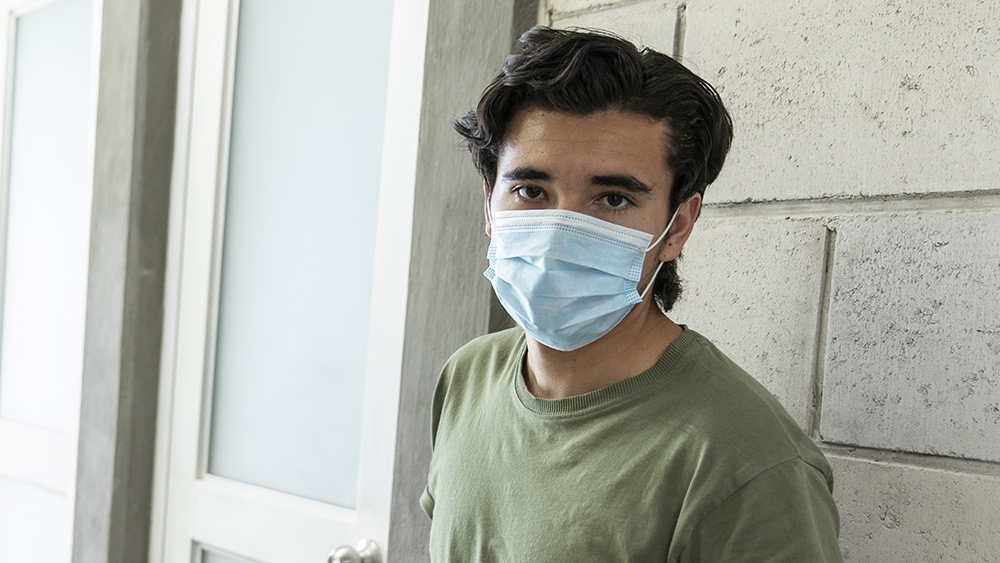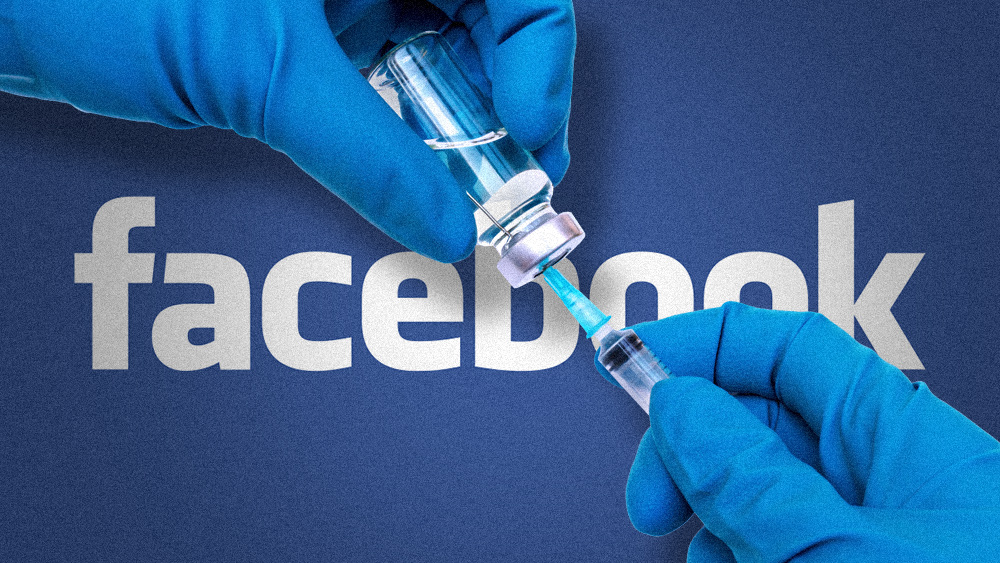Houston hospitals’ ICUs overflowing as coronavirus cases surge
07/02/2020 / By Franz Walker

Houston’s intensive-care wards are being filled beyond capacity, forcing hospitals in America’s fourth-largest city to tap into “surge capacity” to cope with a resurgent Wuhan coronavirus (COVID-19) outbreak.
As of Tuesday, intensive-care units in Houston were at handling around 1,350 patients – 102 percent of capacity – according to the Texas Medical Center. This comes as new COVID-19 cases in Texas broke records for the second straight day and deaths surged the most in seven weeks.
Data released by the medical center Wednesday showed that 36 percent of those intensive-care beds were occupied by the sickest COVID-19 patients with the rest being occupied by patients being treated for other serious ailments.
Hospitals running out of space
On Sunday, at the Lyndon B. Johnson Hospital, medical staff ran out of space for new coronavirus patients. As a result, a dozen COVID-19 patients who were in need of intensive-care were stuck in the public hospital’s emergency room, awaiting transfers to other Houston area hospitals.
A day later, Dr. Robert Phillips, chief physician executive at the Houston Methodist hospital system warned staff members that its COVID-19 caseload was surging. Phillips said that it “has become necessary to consider delaying more surgical services to create further capacity for COVID-19 patients.” This represents an abrupt reversal for the hospital system, which just three days prior, had told thousands of patients that they could keep their surgical appointments.
Meanwhile, the staff at the University of Texas MD Anderson Cancer Center were alerted that they would be taking in COVID-19-struck cancer patients from the city’s overburdened public hospital system. Staff noted that this was a highly unusual move for the specialty hospital.
The plights of these hospitals highlight the growing strain that the coronavirus pandemic is putting on hospital systems in Houston, where hospitalizations from COVID-19 have nearly quadrupled since Memorial Day.
“To tell you the truth, what worries me is not this week, where we’re still kind of handling it,” said Roberta Schwartz, chief innovation officer at Houston Methodist. “I’m really worried about next week.”
Surge capacity – regular hospital beds converted and specially equipped to handle intensive-care patients – can handle the increased number of intensive-care patients for now. However, a post on the Texas Medical Center’s website warns that these will only hold out for around two weeks before the next phase of emergency measures will need to be implemented. (Related: World’s largest medical complex in Texas is running out of ICU beds due to the coronavirus.)
Testing centers also overburdened
It’s not just hospitals that are feeling the strain of the pandemic. Across the state, cities such as Houston have been unable to keep up with the demand for virus testing.
On Wednesday, two of Houston’s open-air testing facilities were forced to shut down before noon after they reached their combined daily capacity of 900. On the same day, Texas posted a record 8,076 new virus cases, pushing the state’s total to 168,062 based on state health department figures. Deaths, on the other hand, jumped by 57 to 2,481, the biggest one-day increase since May 14.
The positive-test rate in the state has been above 13 percent for four days. This is the longest stretch that the rate has been above that threshold since the start of the pandemic.
Houston may be the next New York City
The events in Houston are drawing parallels to those in New York City in late March, where overburdened hospitals saw steep daily increases in the number of patients seeking care.
Houston, however, has so far seen fewer deaths than New York City did back in March. That said, as COVID-19 cases surge in Texas, state officials have yet to implement the same lockdown measures that experts say helped New York City bring its outbreak under concern. This caused public health officials to raise concerns that Houston won’t be able to flatten its curve.
“The time to act and time to be alarmed is not when you’ve hit capacity, but it’s much earlier when you start to see hospitalizations increase at a very fast rate,” said Lauren Ancel Meyers, leader of the COVID-19 Modeling Consortium at the University of Texas at Austin (UT Austin). “It is definitely time to take some kind of action. It is time to be alarmed.”
Meyers also adds that while hospitals in Texas, and indeed across the United States, are generally more prepared to deal with COVID-19 than they were during March and April, the lack of government measures to slow the spread of the disease in the state puts them at a disadvantage.
Texas was one of the first states to reopen, easing social distancing mandates beginning two months ago when new coronavirus cases remained low compared to other states. Now, even as the state’s caseload continues to skyrocket, Gov. Greg Abbot has resisted a return to the lockdown, save for an order last week closing bars and limiting restaurant capacity.
Experts warn, however, that even if measures are implemented, they may take up to two weeks for them to lead to any reductions in new cases and hospitalizations. Meanwhile, hospitalizations will continue to surge in those same two weeks.
“The hospitalizations you see today, they’re not just going to linearly increase in the next two weeks,” said Dr. Clay Johnston, dean of UT Austin’s Dell Medical School. “They’re going to accelerate. When you overwhelm the hospitals, you’re in big trouble. That to me is the impossible task that the governor faces. It’s like steering a giant tanker through a tiny strait without any maps.”
Learn more about the coronavirus by following Pandemic.news.
Sources include:
Tagged Under: coronavirus, covid-19, disease, epidemic, Flu, Hospitals, Houston, ICU, infections, intensive care, outbreak, pandemic, superbugs, Texas, USA, virus



















